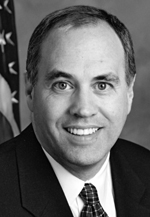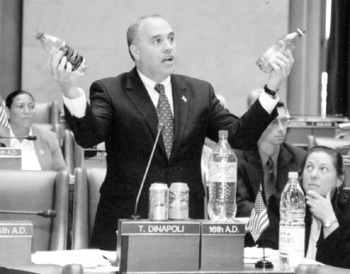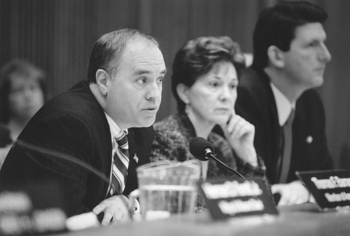|
||
This year the New York State Assembly continued to be a strong voice to protect our state’s fragile environment. This year’s budget – passed on time – had several victories, including enacting a permanent funding increase for the Environmental Protection Fund (EPF). The Assembly’s Environmental Conservation Committee is committed to ensuring that our land, air and water are a priority, which is why we passed all five of the Green Panel’s “Super Bills.”
One issue that I am pleased was finally resolved in the budget was guaranteeing multi-year funding for brownfield projects authorized under the Brownfield Clean-up and Superfund Refinancing law. These funds will make $30 million available to local communities for developing strategies to clean up and reuse brownfields, as well as for grants to assist communities in participating in the redevelopment of brownfields.
Thanks to the help of so many committed environmentalists and the strength of my Assembly colleagues, we took a giant step forward with the Assembly’s passage of the “Bigger Better Bottle Bill.” If the Senate joins us in passing the bill, it would expand the current “bottle bill” law to cover additional beverage containers – such as water, iced tea, juices, and sport drinks. The bill would also recapture unclaimed deposits for the state to distribute regionally through the EPF, helping local governments address their environmental needs. I urge you to call or write your local Assemblymember and Senator and tell them you support this important piece of legislation and want to see it enacted into law in 2006.
The Committee also sheparded two new laws that will help New York businesses improve their bottom line and protect the environment. One grants DEC the power to implement comprehensive pollution prevention initiatives and the other will establish a Small Business Prevention and Environmental Compliance Assistance Program.
Since session concluded, I have been traveling around this beautiful state and conducting hearings on important environmental issues. Earlier this year we continued our series of hearings on vapor intrusion in Ithaca and Hopewell Junction, gathering input from federal and state agencies, local governments, concerned groups and citizens that have been affected by this serious problem. In March of 2005, the Committee issued a preliminary report and we are in the process of finalizing a report with our comprehensive findings.
We also traveled to the Adirondacks and held a hearing on water quality. We heard from people on all sides of the issue and will use their testimony in developing legislation in the upcoming session. Our most recent hearing was on Long Island and centered on ocean and shoreline health. We heard testimony from diverse individuals and organizations that will be extremely helpful as we address these issues in the future.
I need your help on one important project for the committee. We are updating the Environmental Conservation Committee mailing list. Please help us by providing the most current information on you and anyone else you think should be receiving these environmental newsletters and we will update our files.
I continue to be in awe of the natural beauty of New York. Being Chairman of the Assembly Standing Committee on Environmental Conservation is a privilege that I do not take lightly. Protecting our natural resources, making sure our families’ lives are not compromised by environmental hazards and ensuring that future generations will be able to enjoy the vast wonders of New York are all important to me.
We have made much progress in these last few years. But I know as well as you do that we still have many more critical issues that must be addressed. I look forward to working with you on these important issues and I value your input and ideas.
|
Sincerely, |


 Senator Marcellino and Assemblyman DiNapoli held a press conference
earlier this year with Karen Joy Miller from the Huntington Breast Cancer
Coalition and Laura Weinberg from the Great Neck Breast Cancer Coalition
to discuss the proactive approach to these new pieces of legislation.
Senator Marcellino and Assemblyman DiNapoli held a press conference
earlier this year with Karen Joy Miller from the Huntington Breast Cancer
Coalition and Laura Weinberg from the Great Neck Breast Cancer Coalition
to discuss the proactive approach to these new pieces of legislation.
 Assemblyman DiNapoli debating the “Bigger Better Bottle Bill” on the floor of the Assembly.
Assemblyman DiNapoli debating the “Bigger Better Bottle Bill” on the floor of the Assembly.


 Assemblyman DiNapoli addresses environmental groups on the
legislative package the Assembly was passing on Earth Day.
Assemblyman DiNapoli addresses environmental groups on the
legislative package the Assembly was passing on Earth Day.